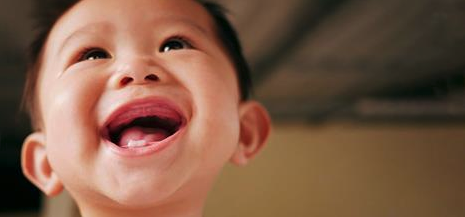Participating in sports can boost a child's physical and mental health in so many ways. But for kids with eczema, exercise can also worsen their symptoms or lead to eczema flare-ups.
The good news: preparing your child with the proper clothing, hydration and moisturizing routine can prevent or minimize eczema flare-ups during sports.
Exercise & eczema flares: what's the connection?
Sudden body temperature changes and sweating are often a part of physical activity. These changes can cause eczema flare-ups. Physical activity can also dry out the skin through the loss of fluids. The sodium in sweat can further dehydrate the skin as well as sting and irritate it.
How to minimize eczema flare-ups while playing sports
During a game: sharing eczema tips with coaches
During a game or practice, there are ways you can help your child minimize skin irritation and dehydration. Share these tips with your child's coaches. Working together, you can keep your child's skin healthy and hydrated and minimize flare-ups.
Keep hydrated with water breaks.
Take frequent cooling breaks.
Gently pat away sweat with clean towels.
Use cooling cloths or towels as needed. They are designed to provide a cooling effect when wet.
Wipe off shared equipment before use to prevent bacteria transfer.
During flare-ups, your child may need to sit out a game, class or event.
Keeping uniforms & workout clothing eczema-friendly
When dressing your child for physical activity, choose clothing that decreases sweat and irritation. Here are some tips.
Remove tags. You can also buy clothing with seamless tags or cover tags with silk material.
Order clothing a size up for a looser fit.
Try moisture-wicking fabric designed to wick sweat away from the skin and dry quickly. Wicking fabrics help prevent clogged pores and cool down the overall body temperature. You may have to test out different fabrics to see which one works best for your child and the specific activity.
Always wash new uniforms and workout clothing before your child wears them. Check the clothing label for laundry care instructions. Use fragrance-free detergents.
Dry clothing in the dryer. Clothing may feel softer when dried in the dryer. However, using the dryer is not recommended for all clothing. Check the clothing label for laundry care instructions.
Wear a slightly damp shirt (dampened with cold water) during physical activity to help prevent overheating.
Keep protective equipment, like helmets, clean and dry when not in use. Follow the manufacturer's directions on how to clean and store equipment.
Irritation from equipment rubbing against the skin can be tough to avoid, but these steps can help: Before and after play keep the skin barrier healthy with daily moisturizing; during and after play, manage sweat.
Moisturizing & protecting skin from sunburn
Always moisturize after bathing and gently towel-drying the skin. If medicine is needed, apply it before the moisturizer.
If the moisturizer does not include sunscreen, also apply a broad-spectrum, oil-free, water-resistant sunscreen of at least sun protection factor (SPF) 15 (up to SPF 50). An SPF of 15 or 30 should be fine for most people; the American Academy of Dermatology recommends an SPF of at least 30. More research studies are needed to test if sunscreen with more than SPF 50 offers any extra protection.
Managing sweat
After a game or other physical activity, it is important to remove wet or sweaty clothes as quickly as possible. If there are showers available, a short lukewarm shower will quickly rinse away sweat and bacteria.
If showering right away is not an option, a damp washcloth or noncomedogenic wipe can be used to cleanse the skin until your child takes a bath at home. These wipes and cleansers, typically used in makeup removal, do not clog pores and help keep the skin hydrated. Once sweat and dirt are removed, reapply moisturizers. Then, change into fresh, clean clothing.
After each use, clean clothing and equipment to remove dead skin cells, bacteria and oils. Check the clothing and product labels for laundry care and cleaning instructions.
To minimize underarm wetness, antiperspirant or deodorant with antiperspirant may be used.
Planning ahead
If your child is on a sports team or you have any special concerns, having a plan may be useful. For example:
Discuss your child's eczema treatment and special considerations with coaches, teachers and activity leaders. Inform them of your child's needs, including extra water and cooling breaks.
Pack a to-go bag of travel-sized toiletries of your child's skin and body care products. Include moisturizer, face and body wash, and shampoo, unless you know that products available at schools won't irritate your child's skin. Also, if needed, pack antiperspirant or deodorant with antiperspirant, cleansing wipes, a cooling cloth or towel, towels, a change of clothes and medicines.
What about swimming with eczema?
Swimming with eczema is different for everyone, since pools can have different effects on skin. Some children prefer chlorinated pools, while others prefer to swim in open water.
For some children, the chlorine in the pool is soothing, like a diluted bleach bath. For others, the chlorine can sting and irritate sensitive skin. Your child may prefer to swim in the open water of a freshwater pond or saltwater lake. If your child is going to the swimming pool, keep in mind that pool chemicals can be drying. Proper moisturizing beforehand is needed.
Before a trip to the pool, apply a layer of moisturizer or a thick emollient followed by sunscreen to protect the skin. Directly after swimming, clean the body with a gentle cleanser and rinse in warm water. Pat the skin mostly dry with a clean towel. While the skin is slightly damp, apply medicated ointment, if needed, and a layer of moisturizer.
Swimming in a pool, a lake, or other open water is an individual choice, but avoid immersing skin that has open sores or is weepy should be avoided.
Staying active
Sports activities provide physical and emotional benefits that children with eczema don't have to miss. By following these tips, your child can safely participate in physical education classes, play on a sports team or swim in swimming pools. Remember, managing the symptoms before, during and after physical activity is key.
More information
Last Updated
3/29/2024
Source
Adapted from HealthyChildren Magazine (American Academy of Pediatrics Copyright © 2024)
The information contained on this Web site should not be used as a substitute for the medical care and advice of your pediatrician. There may be variations in treatment that your pediatrician may recommend based on individual facts and circumstances.
https://www.healthychildren.org/English/health-issues/conditions/skin/Pages/sports-and-eczema-how-to-help-your-child-prevent-flare-ups.aspx?fbclid=IwZXh0bgNhZW0CMTEAAR1I9bI3Za2v5rqBT5n852n2r0Li81SwLhbuvN00aDYTipVFTO-GI4rmkJw_aem_AaBhIIRC4iJFrDSzRRzpOBGMwcTflwrqO7u_VSnp1w2FJKvZywRHIBjYQQCFQ4VuxDvSelkh85gVtFfdzcemTt5Y





